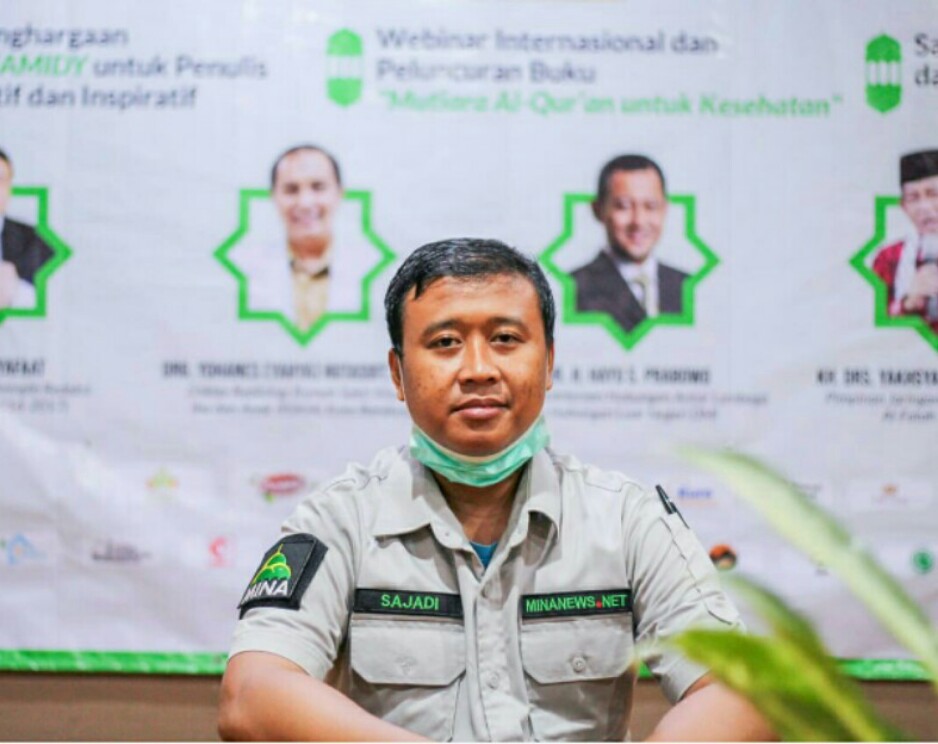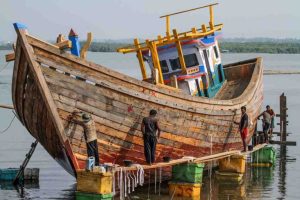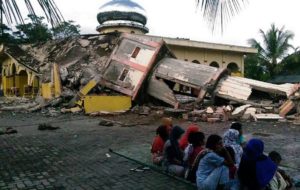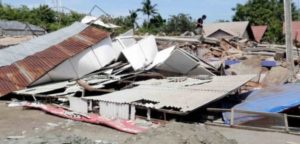Every December 26, the Aceh government, district/city governments in Aceh and all the people of Aceh, remember the tsunami that occurred in 2004.
The tsunami hit Aceh and the Nias Islands, North Sumatra, on December 26, 2004 after an earthquake with a magnitude of 9.3 with an estimated wave height of 30 meters, centered on the Indian Ocean. It is estimated that the speed of the Aceh tsunami waves reached 360 kilometers per hour or around 100 meters per second.
The waves also hit Malaysia, Thailand, Sri Lanka, Bangladesh, India, Maldives, Myanmar, Madagascar, Somalia, Kenya, Tanzania, Seychelles, South Africa, and Yemen.
Of course, the waves were so high that in a matter of a few minutes they immediately destroyed the coastal area to the settlements.
Also Read: Nuclear Technology: Harm and Benefit from the Qur’anic Perspective
The Aceh government focuses the 18th anniversary of the Aceh tsunami at the Siron Mass Grave, Want Jaya District, Aceh Besar District.
The Siron mass grave is one of the places to witness how devastating the 2004 tsunami was, there were more than 40,000 martyrs buried.
Apart from Siron, other mass graves for Aceh tsunami victims are in Lambaro, Lhok Nga and Ulee Lheu. Generally, the mass graves of the victims of the Aceh tsunami do not have tombstones. This is because many victims of the Aceh tsunami are not identified.
The author had the opportunity to visit the Baiturrahman Great Mosque in Banda Aceh, as part of a city tour during the 2nd National Working Meeting (Rakernas) of the Indonesian Cyber Media Network (JMSI), on Saturday (12/11/2022).
Also Read: Gaza Cries Out, the World Stays Silent: A Wounded Humanity
The mosque is a monument to the 2004 Aceh Tsunami which is still standing strong even though the surrounding buildings were leveled to the ground due to the disaster that struck 18 years ago.
Even though the impact of the tsunami was so devastating, the Baiturrahman Mosque still stood firm even though the buildings and trees around it had collapsed.
Indeed, this mosque is not the only mosque in Aceh which was still standing upright when it was hit by the tsunami, because the specialty of the Baiturrahman Mosque also lies in its historical value. This mosque is a symbol of religion, culture, spirit, strength, struggle and nationalism of the people of Aceh. This mosque is a Landmark of Banda Aceh City since the era of the Aceh Sultanate.
One proof of the splendor of Islamic culture in Aceh is the presence of the Baiturrahman Mosque, which is an important meeting point for Muslims on the Veranda of Mecca. Many important activities have been held in this place. This mosque was completed in 1881. Since its establishment, the mosque has undergone several restorations.
Also Read: Indo Defence Expo and Forum; Sharing Responsibility of Humankind and Environment
History of the Baiturrahman Mosque
Reporting from the Ministry of Education and Culture and Research and Technology, the Baiturrahman Mosque is a mosque in the heart of Aceh City which was founded in 1022 H/1612 AD.
The mosque was built when Sultan Iskandar Muda reigned. However, there are also those who believe Sultan Alauddin Jonnan Mahmudsyah was another figure who founded it in 1292 AD.
The Baiturrahman Mosque has various functions for the people of Aceh, such as a place for prayer, recitation, and other major religious events. However, the Dutch colonial invaders once burned this mosque when they carried out an attack on Koetaradja, which is currently known as Banda Aceh.
Also Read: Safiya Saeed: From Somali Migrant to First Hijab-Wearing Mayor of Sheffield
The burning occurred on April 10, 1873 and this event led to fighting between the Acehnese and the Dutch.
As a result, on April 14, 1873, the Netherlands had to lose a commander named Major General Johan Harmen Rudolf Köhler.
The Baitturahman Mosque which was burned down was then rebuilt by Governor General Van Lansberge who promised the people of Aceh.
The laying of the first stone for the rebuilding of the mosque was carried out on Thursday 13 Shawwal 1296 H/9 October 1879 AD by Tengku Qadhi Malikul Adil.
Also Read: Why Food Safety is Essential During Hajj Services?
Mosque architecture
The construction of the Baiturrahman Mosque was carried out in 1879-1881 AD by carrying out an architecture that adapted the Moghul style. Later expansion was carried out in 1935 on the right and left with the addition of two domes. This expansion made the Baiturrahman Mosque have 5 domes and 2 new domes were added again in 1975.
The building of the Baiturrahman Grand Mosque in Banda Aceh is a world cultural heritage building with the outside and inside construction being the authenticity of the building elements from the pre-independence era.
The Baiturrahman Grand Mosque looked even more magnificent with the erection of 12 giant umbrellas with a diameter of 12 meters which were inaugurated by the Vice President at the time, Jusuf Kalla in May 2017.
Also Read: Indonesia Sign Language Mushaf Qur’an; A Sustainable Gift in Celebrating Pancasila Birthday
In addition, the mosque, which uses concrete blocks, has also been replaced with marble to make it cooler. At first glance, the giant umbrella design resembles the Prophet’s Mosque in Medina.
While on the front side of the mosque, there are five black domes. The existence of this dome adds to the impression of Islamic architecture, which has long been known for its magnificent dome buildings.
Meanwhile, according to information from the World of Mosques, the overall architecture of the mosque is a combination of styles from a number of countries.
The main gate, which resembles a classic Dutch house style, is right in front of the main door, which is bounded by the portico of the architectural style of mosques in Spain. The door that serves as a partition leading to the main hall of the mosque is in a style typical of ancient Indian architecture.
Also Read: Leila Khaled, The Icon of Palestinian Women’s Resistance
Entering the main hall of the mosque, you will see a wide expanse of white marble flooring from Italy. The main room is also filled with white pillars with a few decorative accents at the bottom. This white color makes the main room seem more spacious.
The inside of the main dome which is right in the middle of the main room is equipped with a chandelier containing 17 points of lighting. Decorative chandeliers can also be seen on the mosque’s mihrab, right at the midpoint of the front of the room.
The function of the mosque is currently growing along with the implementation of Islamic law in Nangroe Aceh Darussalam. Not only as a place of worship and religious education, but now the Baiturrahman Grand Mosque is also used as a medium for developing social potential. (T/RE1)
Mi’raj News Agency (MINA)
Also Read: The Twilight of the Zionist Israeli State





























![MUI Chairman for Foreign Relations and International Cooperation, Sudarnoto Abdul Hakim (center) at the One Million Women for Gaza Press Conference entitled "Women Boycott Pro-Israel Products" held at the Swiss-Belinn Cawang Hotel, East Jakarta, Thursday (3/7/2025). [Photo: Arina/MINA]](https://en.minanews.net/wp-content/uploads/2025/07/20250703_144042-scaled-1-300x225.jpg)




 Mina Indonesia
Mina Indonesia Mina Arabic
Mina Arabic